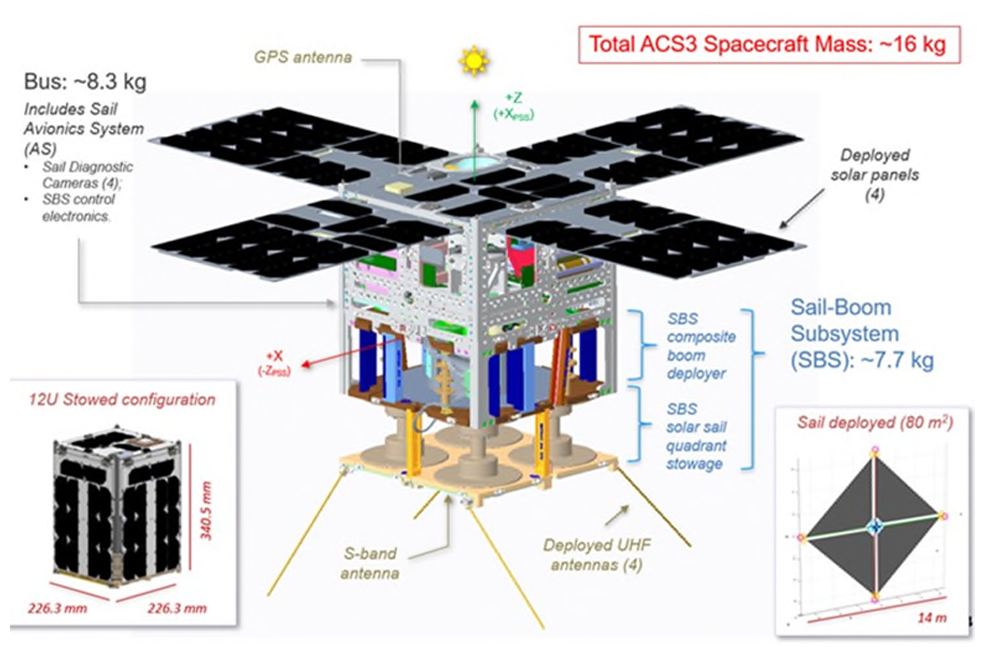*
Waterloo-based SkyWatch is continuing to simplify and streamline its product offerings, focusing them less on intermediaries and more on end-users. The latest move: confirming at INTERGEO that they’ve officially rebuilt the old EarthCache Enterprise as SkyWatch HUB.
While it’s still an offering focused on larger customers and larger organizations, it completes SkyWatch’s transition away from being an API provider for other imagery application creators, to a company with full-fledged service offerings intended for end user companies and their stakeholders.
EarthCache and TerraStream
SkyWatch is a company that’s focused on creating markets for buyers and sellers of Earth observation imagery. Until this year, SkyWatch had two main product offerings: EarthCache and TerraStream. As detailed in previous SpaceQ coverage, EarthCache was created to serve as a platform where you could access large databases of high quality imagery from a variety of different sources using different technologies. This included hyperspectral and synthetic aperture radar imagery, as well as aerial imagery.
It was intended primarily as an API, where software developers could build links between EarchCache and their own applications, with an eye to using those applications to aid the end-user market. Over time, however, EarchCache became more focused on actual imagery clients, rather than application providers.
Terrastream, meanwhile, was focused on helping imagery companies find customers, as well as managing as much of the process of delivering that imagery to customers as possible. One major recent development was the incorporation of edge computing into TerraStream, so that companies could rely on SkyWatch on-orbit hardware and software to both process and transmit the imagery to customers, substantially easing their own business and technological burdens.
Pivot to new SkyWatch platform and new offerings
As of earlier this year, however, SkyWatch seems to have changed tack. As SkyWatch co-founder and CEO James Slifierz described in a May 23rd video presentation, and as the company detailed in its announcement, they realized that “the fragmented infrastructure powering the Earth observation market was far more immature than we could have imagined.” Many of the companies coming to them were imagery end-users who didn’t have either the time or resources to develop their own applications to work with the EarthCache API, and simply wanted solutions that let them access imagery.
That led to a pivot to the SkyWatch Platform, which consists of seven core services (Identity, Archive & Tasking, Order, Fulfillment, Payments, Policy, and Location) that are bundled into a variety of product offerings aimed at different clienteles. These are based on the same tools and services that SkyWatch was using internally for EarchCache and TerraStream.
SkyWatch EXPLORE is, according to SkyWatch, “ targeted at individual end users whose only requirement is a very simple UX to quickly search for and buy geospatial data.” No API, no complex services, but a simple platform with a simple offering with pay-as-you-use billing. SkyWatch BUILD is similar to the older EarthCache product, in that it is aimed at companies that are trying to “programmatically integrate geospatial data into their applications, whether for their own end use or for sale out to their user base,” while SkyWatch MAP is aimed at GIS users and companies looking for GIS information, allowing for integration into existing GIS systems.
SkyWatch CONNECT, meanwhile, is “targeted to organizations selling geospatial data, enabling them to reach hundreds of thousands of users”—essentially the successor to TerraStream. It handles payment processing, and allows imagery providers to track and approve tasking orders, manage archive orders, review performance, and view detailed analytics.
Pivoting to Service Provider
The subject of this recent announcement, however, is the full launch of their most ambitious offering: SkyWatch HUB, which is “targeted at organizations, big and small, who need to manage procurement, storage, payment, and sharing across their entire organization.” Serving as a replacement for their old Earthcache Enterprise, it gives enterprises access to all of SkyWatch’s core services, but also helps companies manage imagery data and incorporate it into their existing workflows.
Slifierz said in the video announcement for HUB that the company believes that even larger companies “probably don’t have the right tools internally to utilize that data to its full extent,” adding that their “finance department probably has a hard time monitoring spend” and their “geospatial team is probably sharing data over email and Slack” and putting the data in cloud storage. So SkyWatch HUB, he said, is “built for organizations who need to scale the use and benefits of remote sensing data inside their organization.”
SkyWatch’s INTERGEO announcement pointed to prepayments for bulk orders, a “product library” that “showcases all on-demand and on-request data sources,” previews of imagery over basemaps for “quick real-time visual change detection,” and “granular reporting on expenditures.” In some respects, this is similar to the previous EarthCache Enterprise, which also featured spending and policy management, integration into GIS systems, and integration of analytics, but more robust and more focused on end-users that may not be fully equipped to manage this kind of data.
In another video presentation on the new hub, SkyWatch said that the HUB administrative application allows companies to “seamlessly access geospatial data, monitor spend, track project progress, and share data with stakeholders.” This allows enterprise “SuperAdmins” to perform detailed management of the enterprise’s users’ interactions with SkyWatch offerings like EXPLORE, MAP and CONNECT, as well as managing users’ tasking requests, handling purchasing orders, and managing access to stored data.
SkyWatch’s INTERGEO announcement elaborated on their target businesses, saying that the capabilities were intended for “industries such as Architecture, Engineering and Construction (AEC), Mining and Natural Resources, Oil and Gas, Energy, and other verticals using high-volumes of geospatial data.” Many of these are familiar target industries for readers of SpaceQ, and are reminiscent of fellow Canadian space company Wyvern, whose Earth observation use cases were described by Wyvern as “agriculture and environmental monitoring, mining [and] prospecting, defense and disaster management.”
In the INTERGEO announcement, SkyWatch Chief Product Officer David Proulx said that “our goal is to offer enterprise customers the most comprehensive solution for their geospatial data needs,” and that “these new features are a testament to our ongoing commitment to making satellite data more accessible and actionable for organizations of all sizes.”





No comments! Be the first commenter?